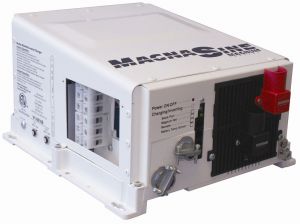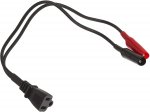nomifyle
TB Fanatic
There is a difference in cutting and gathering.How old is "too old" to gather firewood?
God is good all the time
Judy
There is a difference in cutting and gathering.How old is "too old" to gather firewood?
I have not seen them, but believe you me, I think about it a whole lot. My husband was a lineman for years and now is the purchasing agent for a power company (small). 2 weekends ago, a transformer went out at a big manufacturing plant here in town, and he had to go get the crane ordered etc to reset it. (Yes, he still does that stuff, even though it technically is his assistant's job-he's OCD) He made the comment that he hoped that they didn't need another one anytime soon because the lead time was 40 weeks for that one. He has been telling the engineers and powers that be that if they think they are going to need xyz, they need to tell him NOW, due to lead times. He tried to order a couple of transformers (pad mounts) for backup, and was told that since they had one that had just been swapped out, it could be used as backup... Hurricane season has not been terrible as far as seasons go (not downplaying the damages there have been), and neither has our storm season, but we still have fall to get thru here in the SE and lastnight's storms show what a booger those can be, and then you have the winter storms coming out west and up north. Supplies are gonna get tight, no matter what line of goods you are looking at.Good grief suddenly there are ads on the tv stating that no on one is thinking about power or outages. This is running every few minutes. They’re glorifying black outs.
Spare me you’re holier than though I don’t own or watch a tv crap, nobody cares.
Always enjoyed perusing google pics of those huge monolithic Russian heavy (as in several tons of) masonry kitchen-living space fireplace/cookstoves that were fired up hot for the morning cooking, and all that mass absorbed the heat to be released slowly, throughout the day.
- Magnum Energy MS4448PAE 4400 Watt Sine Wave inverter 120/240 Volt
Magnum Energy MS4448PAE 4400 Watt Sine Wave inverter 120/240 Volt
SKU
MS4448PAE
Be the first to review this product
View Product Documents
$2,027.57
QTY
ADD TO CART
Skip to the end of the images gallery

Skip to the beginning of the images gallery
Details
Magnum Energy Pure Sine Wave MS4448PAE Inverter/Charger, 4400 Watts, 48 VDC
NOTE: We are an authorized Magnum Energy dealer. Be careful when browsing the internet for deals on Magnum equipment. According to Magnum's policy, the warranty on equipment purchased from unauthorized dealers is null and void. If you see a price that looks too good to be true, it probably is.
Important Information: The Magnum PAE inverters are rated for 240 Volts AC output. When powering 120 Volt devices, the inverter is not capable of delivering its full power output. The MS4448PAE is capable of delivering a maximum of 3,564 VA at 120 Volts AC.
Split phase 120/240 Volt.
Introducing the MS-PAE 120/240V Series Inverter/Charger from Magnum Energy - a pure sine wave inverter designed specifically for the most demanding renewable energy applications. The MS-PAE Series is powerful, easy-to-use, and best of all, cost effective.
The MS4448PAE is unique in that you have either 115 volts AC, 230 volts AC, or 115-neutral-115 output. Basically this is a dual stacked 2200 watt sine wave inverter stacked in a single unit.
No stacking required: The unique design of the MS-PAE Series can provide 120 or 240 volt output in one unit, eliminating the need to stack two units together to get 240 volts. Up to four MS-PAE units can be paralleled together to increase your power output.
The MS-PAE Series is ETL listed to the stringent requirements of UL 1741 and CSA C22.2 No. 107.1-01 for Renewable Energy installations.
3 year warranty
5 year warranty if installed on an MP or MMP panel
Product Documents
MS-PAE Series Specifications
MS-PAE Series Manual
AC Coupling Line Diagram
The winter before I was in training at Camp Greely in Alaska. I was much warmer that winter and I had to sleep with my food to eat breakfast in the morning. We did not get much breakfast in Florida. By then we were down to one Sea Ration a day.That was our 2nd year in Florida. LOL. I suppose it isn't funny because that was the first nail in the coffin of the citrus industry in this state. My Dad had just come back in '75 from being TDY a year in Greenland. He said we were moving to Florida and he was never ever seeing another snowflake. ROFL
There is a difference in cutting and gathering.
God is good all the time
Judy
In my area, not much would be gained from gathering. Mostly twigs.That was my point.
Even if too old to cut, he should be able to gather as long as he is still ambulatory.
In my area, not much would be gained from gathering. Mostly twigs.
I am well past 70 and can still run a big chainsaw and split firewood but it is rapidly becoming more difficult.
Bending over and straightening up repeatedly creates the most problems for me.
It varies a lot with the individual
LOL doesn't know big wood from brush. LOLThat was my point.
Even if too old to cut, he should be able to gather as long as he is still ambulatory.
Yes, Ma'am. It's pretty simple. I'm sure you're familiar with standard outdoor lighting fixtures, right? They're the type that usually have two bulb receptacles. All you have to do is connect a red automotive wire - which will be the positive wire - to the center conductor on the fixture. That's the little "button" at the bottom and center of the fixture. Connect a black wire to the metal "screw" part of the receptacle. That's the negative wire. The red wire will go to the positive terminal on a battery and the black wire will go to the negative terminal. Simple, eh?
Best
Doc
Clear as mud.


Yeah, one can't heat and cook with a few small limbs and twigs. We rely only on wood for our heat during the winter, and I have a wood cook stove that is also used. It takes a lot of firewood to keep those going.
Right now, Cary is well able to cut, haul, split, and stack all that we need. He's only in his 60's, so he still has a good many years left, God willing. It never hurts to plan for the future, though.
Rocket stove. It is the primary source of cooking and heat in many nations.
 . Iirc, my dad did two tdys up there. He does tell us about life in the ice.
. Iirc, my dad did two tdys up there. He does tell us about life in the ice.Get propane.I do have a whole house generator but as we all know, without the nat gas to run it, it's a yard ornament.
I've seen many rocket stoves used for cooking outdoors, but I've never seen one used inside for heating and cooking.
Thread drift, but it’s Interesting how many of us had dad who were stationed in Greenland. Mine was too, but says he still can’t talk about some of it.. Iirc, my dad did two tdys up there. He does tell us about life in the ice.
If you’ve been cutting firewoos for years, you long ago picked up the easy stuff.How old is "too old" to gather firewood?
I have a book on how to make the built-in ones. They are adobe, concrete, or masonry, and much larger than your standard coffee/soup can camping version. They still take small sticks, burn very efficiently, and produce little smoke. Similar to the Russian is some respects (you can sit/sleep on them). Also very good looking.I've seen many rocket stoves used for cooking outdoors, but I've never seen one used inside for heating and cooking.
My gen is hard lined into the nat gas system. I'd need a big tank put in my yard. While a great idea, it's not in my cards for now. It will be when it's too late.Get propane.
Get propane.
My gen is hard lined into the nat gas system. I'd need a big tank put in my yard. While a great idea, it's not in my cards for now. It will be when it's too late.
My husband is out of the wood cutting business, but I can do it if I have to. However, at this point we just buy the wood cut and split. It makes life a little easier.Yeah, one can't heat and cook with a few small limbs and twigs. We rely only on wood for our heat during the winter, and I have a wood cook stove that is also used. It takes a lot of firewood to keep those going.
Right now, Cary is well able to cut, haul, split, and stack all that we need. He's only in his 60's, so he still has a good many years left, God willing. It never hurts to plan for the future, though.
Get propane.
Did you not hear about the propane shortage? Several farmers I'm following on YouTube are talking about the propane shortage, it's pretty bad right now, as it's used for drying grain after harvest.
Just had the tank filled today. $3.70 per gallon
My husband is out of the wood cutting business, but I can do it if I have to. However, at this point we just buy the wood cut and split. It makes life a little easier.
Or better yet, work towards switching it to Wood Gasification and watch both Newsom's and Greta's head explode from afar...
Just had the tank filled today. $3.70 per gallon
It’s the inverter’s carrier wave that causes the laminations in the rotor and the windings to whine. If it is not set properly, which I do not know if can be done on home inverter systems, it can burn out motors. New and improved 3phase industrial based inverters do have the capability to change the carrier frequency in their programming. This change make a significant reduction in motor noise, let the motor run cooler, and more efficiently.
Understand... my point was not that three phase inverters could be used in a home style setting. My point was it’s the inverter’s carrier wave frequency that causes the damage and noise to motor loads.Home electricity is single phase, and three phase inverters won't work on household appliances. Interesting info, but not usable in homes.
It's bad enough that the ethanol plant will dry the corn for free this yearDid you not hear about the propane shortage? Several farmers I'm following on YouTube are talking about the propane shortage, it's pretty bad right now, as it's used for drying grain after harvest.
